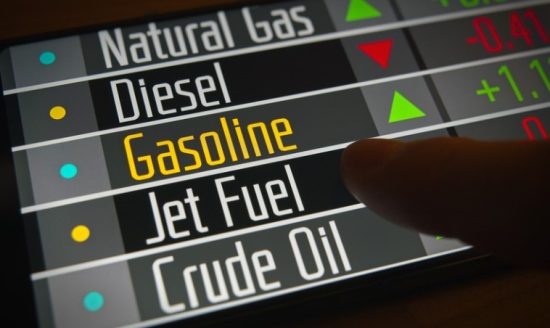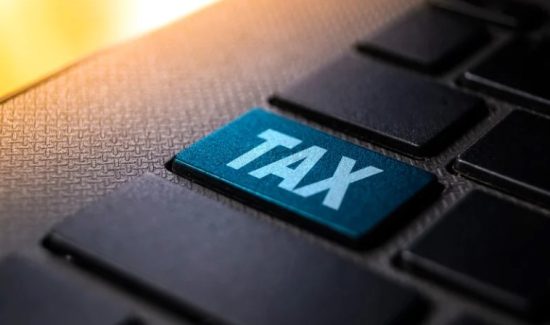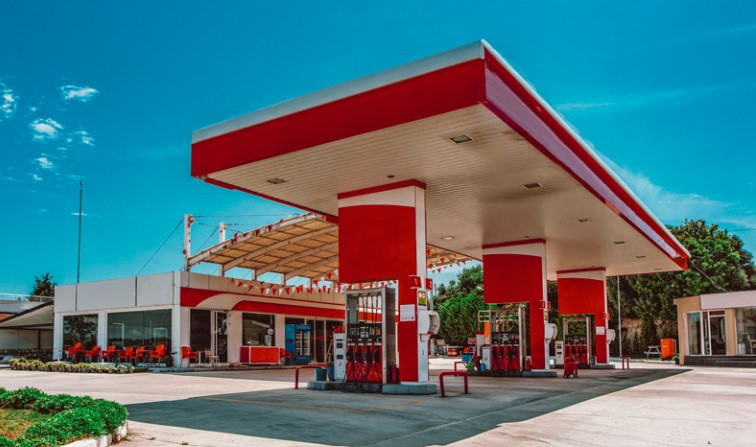Are you tired of constantly checking your fuel gauge and worrying about how much a full tank will cost? Well, brace yourself because we’re taking a deep dive into the gas prices in Hamilton. From analyzing the factors contributing to price fluctuations to exploring solutions for reducing expenses, this blog post has covered you. So buckle up, and let’s explore what’s causing those pesky increases at the pump!
What Are the Gas Prices in Hamilton?

Most people in Hamilton are aware of the high gas prices. The question is, why do they continue to increase? Here is a brief overview of gas prices in Hamilton and some of the reasons behind the hikes.
The average price for a litre of gas in Hamilton is currently $1.58. This is higher than the provincial average of $1.56 and significantly higher than the national average. Prices have been on the rise for several months, and there seems to be no end in sight.
There are a number of factors that contribute to high gas prices in Hamilton. First, the city is located quite far from major refining centres, meaning that transportation costs add to the final price at the pump. Additionally, taxes on gasoline are higher in Ontario than in any other province, making up almost 20% of the final cost of a litre of gas.
Hamilton is home to a number of environmental initiatives that add to the cost of gasoline production and distribution. For example, the city has implemented a low-emissions zone downtown, which requires fuel suppliers to use cleaner-burning gasoline. All of these factors together result in higher gas prices for Hamiltonians.
Factors That Affect Gas Prices
There are a variety of factors that can affect the price of gas in Hamilton. Here are a few of the most typical ones:
The cost of crude oil: It is the biggest factor affecting Ontario gas prices. When the cost of crude oil goes up, so do gas prices.
Refining costs: It costs money to refine crude oil into gasoline, and these costs can fluctuate.
Distribution and marketing costs: Gaining gasoline from the refinery to gas stations incur additional costs, which are passed on to consumers.
Taxes: Gasoline is taxed at both the federal and provincial levels, which adds to the cost at the pump.
Seasonal demand: Gasoline demand typically increases in summer as people take vacations and travel more. This can lead to higher prices.
Supply and Demand of Oil
The supply and demand of oil determine the gas prices in Hamilton. The higher the demand for oil, the higher the gas price will be. The reason why gas prices have been increasing lately is because the demand for oil has been increasing. This is due to the growing economy and the increased use of vehicles. The supply of oil has not been able to keep up with the demand, which has led to higher prices.
Tax Regulations

- The Ontario Energy Board (OEB) currently regulates gas prices in Hamilton.
- The OEB is an independent, not-for-profit regulator that is responsible for setting the price of natural gas in the province.
- The price of natural gas is set every month and is based on a number of factors, including the cost of gas at the wellhead, transportation costs, and other market factors.
- The OEB also regulates the distribution and transmission of natural gas in Ontario.
- Distribution companies are responsible for delivering gas to customers and are allowed to charge a delivery fee.
- Transmission companies own and operate pipelines transporting gas across the province.
The Cost of Refining and Distribution
The cost of refining and distributing gasoline and diesel fuel in Hamilton is a function of many factors. The most important factor is the cost of crude oil, which is the major raw material used to produce gasoline and diesel fuel. Other important factors include the costs of refining, distribution, marketing, and taxes.
The price of crude oil has fluctuated widely in recent years, reaching a high of over $140 per barrel in 2008 before falling to a low of around $40 per barrel in early 2009. Crude oil prices have since recovered somewhat but remain well below their highs of a few years ago.
The cost of refining crude oil into gasoline and diesel fuel also varies depending on market conditions. For example, refinery capacity utilization rates can impact refining costs. When demand for gasoline and diesel fuel is high, and refinery capacity utilization rates are low, refining crude oil into these fuels can cost more. Transportation, labour, and electricity costs can also impact refining costs.
After refined gasoline and diesel fuel, they must be transported to gas stations where consumers can purchase them. The cost of transportation can vary depending on the distance the fuel needs to be transported and the mode of transport used (e.g., truck, pipeline, ship). Gas station owners must also purchase equipment (e.g., pumps) and pay for labour costs associated with operating their businesses. All these factors contribute to the retail price consumers pay for gasoline and diesel fuel at
Local Economic Conditions

When it comes to gas prices, Hamiltonians are all too familiar with the ever-changing and often unpredictable costs at the pumps.
For the past few years, Hamilton has seen a steady increase in gas prices. The average price of gas in Hamilton is now $1.58 per litre.
There are a number of factors that contribute to these rising prices, including:
The cost of crude oil: Crude oil is a major component in the production of gasoline, and its price fluctuates on international markets. When the price of crude oil rises, so does the price of petrol.
Transportation and refining costs: It costs money to transport crude oil from where it’s produced to refineries where it’s turned into gasoline. These costs are passed on to consumers in the form of higher gas prices.
Provincial taxes: In Ontario, drivers also have to pay a provincial tax on gasoline which is currently 13%. This fuel tax goes towards funding public transit and other transportation initiatives in the province.
Environmental regulations: New environmental regulations have also contributed to higher gas prices as refineries have had to invest in new technology to meet these standards.
Unfortunately, there’s no end in sight for rising gas prices, and Hamiltonians will continue to feel the pinch at the pumps for the foreseeable future.
How to Save Money on Gas Prices in Hamilton?

Use a gas price comparison website – Gas prices in Hamilton can vary greatly from station to station, so it pays to do your homework and find the cheapest option. A gas price comparison website can help you easily compare prices at different stations and find the best deal.
Take advantage of discounts – Many gas stations offer discounts for certain groups of people, such as seniors or students. If you belong to any of these groups, make sure to take advantage of the discount when filling up your tank.
Purchase fuel-efficient vehicles – If you’re in the market for a new car, consider choosing one that’s more fuel-efficient. While these vehicles may have a higher initial purchase price, using less gasoline save you money in the long run.
Drive less – One of the best ways to save gasoline money is to drive less. If you can carpool, ride your bike or take public transit instead of driving whenever possible, you’ll quickly see a decrease in your fuel costs.
Conclusion
Gas prices in Hamilton are subject to the same wide variety of factors as any other city, including supply and demand, government taxes, production costs, and market conditions. While it can be frustrating when gas prices increase unexpectedly or stay high for long periods of time, understanding why they do so can help us better plan our budgets accordingly. Keeping an eye on the current gas prices in Hamilton is a good way to ensure that you’re always getting the best deal possible.
FAQ – Gas Prices in Hamilton

Where are the cheapest gas prices in Hamilton?
If you’re looking for the cheapest gas prices in Hamilton, you’ll want to head to the city’s east end. A few gas stations in this area offer very competitive prices. However, it’s important to note that these prices can change quickly, so checking before you fill up is always a good idea.
In general, gas prices in Hamilton are quite reasonable compared to other parts of the country. However, they have been on the rise in recent months due to a number of factors. These include an increase in demand from both Canadian and U.S. consumers, as well as higher crude oil prices.
Is gas cheaper in Canada or USA?
Many factors determine the price of gasoline in Hamilton. The cost of crude oil, the refining process, taxes, and distribution and marketing costs all play a role in setting the price at the pump.
In recent years, crude oil prices have been the biggest factor affecting gas prices. As crude oil prices have risen and fallen, so too have gas prices. The price of crude oil is set on international markets and is beyond the control of any one government.
That said, there are some differences in gas prices between Canada and the United States. In general, gas is cheaper in the United States than it is in Canada. This is due to a number of factors, including lower taxes on gasoline in the United States and a higher demand for gasoline in North America.
How much is 1 litre of gas in Ontario?
According to the Ontario Energy Board, the current price of 1 litre of gas in Hamilton is $160.6. The main reason for this significant increase in gas prices is due to the provincial carbon tax that was implemented on January 1st, 2019. The carbon tax is applied to all fossil fuels, including natural gas, propane, and gasoline.
What is the highest price of gas in Canada?
From 1992 to 2023, the average price of gasoline in Canada was 0.98 USD per litre, with record highs of 1.59 USD per litre in June 2022 and 0.41 USD per litre in December 1998.
What city in Canada has the cheapest gas?
The price of gasoline in Hamilton is determined by a number of factors, including the cost of crude oil, refining costs, taxes and distribution costs. Prices also vary depending on the type of gas you purchase. Regular unleaded gasoline typically costs less than premium unleaded gasoline.
The average cost of regular unleaded gasoline in Hamilton is $1.22 per litre. The average cost of premium unleaded gasoline is $1.32 per litre. However, prices can vary significantly from one gas station to another.
So, what city in Canada has the cheapest gas? It depends on the day, but Fort McMurray, Alberta, typically has the lowest prices.










